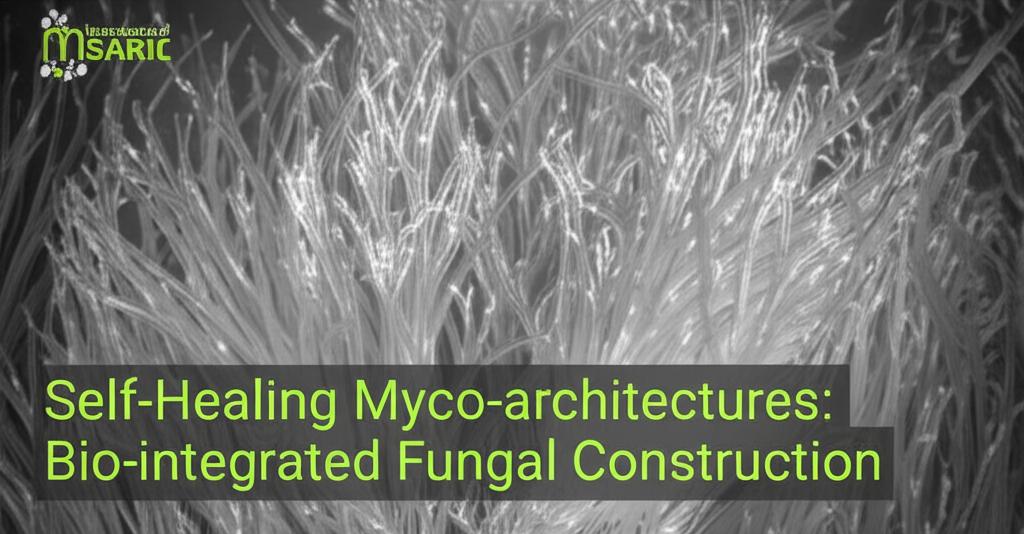Fungi are stepping into the limelight of sustainable construction, offering a future where buildings might grow, heal themselves, and integrate with the environment. Mycelium, the root-like network of fungi, is at the heart of this revolution, transforming how we think about building materials.
The Promise of Living MaterialsResearchers are actively developing mycelium-based materials that are not only sustainable but also possess remarkable properties. One of the most exciting advancements is the creation of self-repairing mycelium materials. By combining fungal tissue with bacterial cells, scientists have engineered a living building material that can mend itself when damaged. This biomineralized material incorporates minerals produced by the living cells within it, offering a low-emission, regenerative alternative to traditional concrete, which accounts for a significant portion of global CO₂ emissions.
These innovative materials are designed to remain functional for extended periods, with some demonstrating the ability to self-repair for at least a month. The bacteria embedded within the material can trigger repair mechanisms in response to damage or contamination. This self-healing capability could drastically reduce maintenance needs and extend the lifespan of structures.
Beyond Self-Healing: A Multifaceted MaterialMycelium's potential extends far beyond self-repair. It boasts a range of desirable attributes for construction:
- Sustainability: Mycelium can be grown on agricultural waste, transforming an often-discarded resource into a valuable building material. This process also sequesters carbon and can even produce oxygen. Once a mycelium-based structure has served its purpose, it can be composted, leaving no harmful residues.
- Insulation: The dense, fibrous network of mycelium provides excellent thermal and acoustic insulation, contributing to more energy-efficient buildings.
- Fire Resistance: Mycelium is inherently fire-resistant, enhancing the safety of buildings constructed with it.
- Structural Strength: Surprisingly strong, mycelium's interwoven structure can offer structural capabilities comparable to traditional materials like wood and even, in some engineered forms, concrete. It's also significantly lighter, which can reduce transportation and construction costs.
- Versatility: The applications for mycelium are diverse. It can be molded into various shapes to create bricks, panels, insulation, and even furniture. Researchers are exploring its use in building envelopes, including walls, facades, and roofing systems.
The field of myco-architecture is still young, but the pace of innovation is rapid. Current research focuses on:
- Enhancing Durability and Strength: While promising, current mycelium-based materials may not yet match the strength of conventional concrete in all applications. Ongoing research aims to improve these properties.
- Scaling Up Production: Developing efficient and cost-effective methods for large-scale manufacturing is crucial for wider adoption.
- Standardization: Establishing standardized construction techniques and material testing protocols will be important for regulatory approval and industry confidence.
- Advanced Functionalities: Scientists are exploring ways to integrate additional functionalities into mycelium materials, such as biosensors for environmental monitoring, the ability to remediate contaminants from the environment, or even bioluminescent lighting.
- Complex Geometries: Researchers are learning to control the internal architecture of mycelium materials, creating complex, nature-inspired structures like those found in cortical bone. This opens possibilities for new forms of material engineering.
- Extreme Environments: The potential of myco-architecture even extends to off-Earth applications, with NASA exploring the use of fungi to grow habitats on the Moon or Mars.
While the potential of self-healing myco-architectures is immense, challenges remain. Ensuring the long-term viability of the living organisms within the materials, especially in harsh environmental conditions, is a key area of research. Further optimization is needed to make these materials consistently strong and durable enough for widespread structural use.
However, the drive for sustainable and resilient construction is pushing this innovative field forward. As research progresses and technologies mature, we may see a future where our buildings are not just inert structures, but living, breathing, and self-sustaining parts of our ecosystem. The ongoing exploration of fungal materials signals a significant shift towards a more circular and bio-integrated approach to building, offering solutions that are not just less harmful, but actively regenerative.

